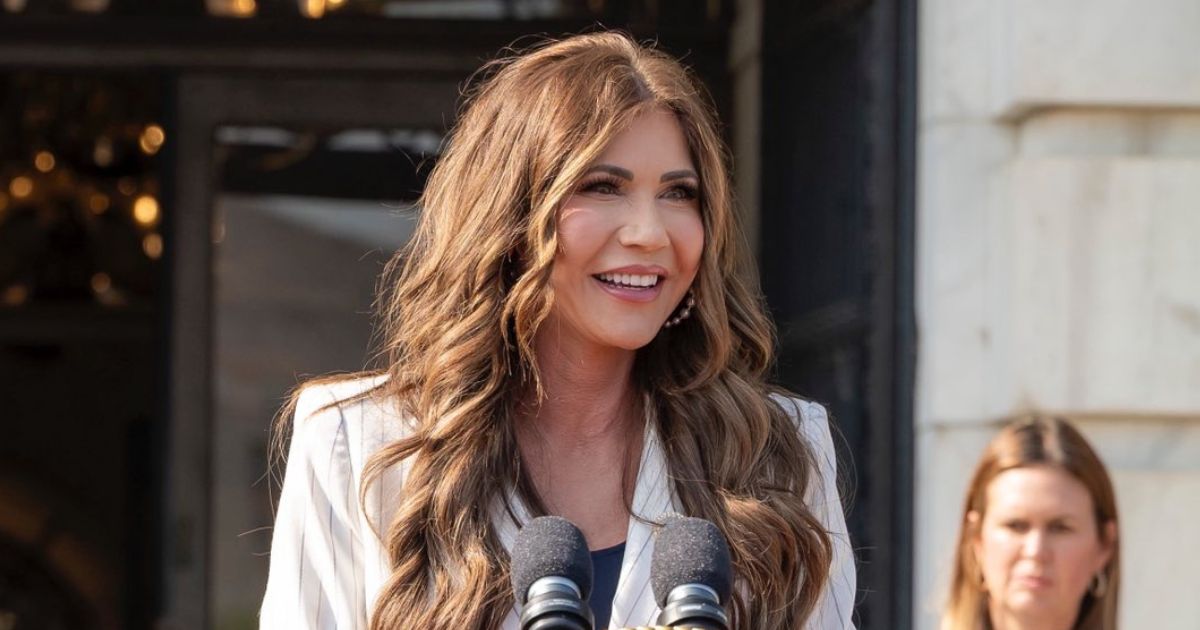The Department of Homeland Security is shelling out big money for luxury air travel, purchasing two Gulfstream business jets that will be available for Secretary Kristi Noem and other top officials, according to multiple reports. The buy comes as the Coast Guard, which sits under DHS, initially floated a far smaller request for a single replacement aircraft at an estimated $50 million earlier this year, a figure that ballooned once the department moved ahead with a two-jet package, according to Reuters.
The price tag depends on whom you ask, and both numbers are eye-popping. The New York Times pegged the deal at $172 million, characterizing it as a sole-source purchase meant to swap out an aging long-range command and control plane. The Washington Post reported the total at $200 million, noting the package includes training, specialized paint, and cabin enhancements. Either way, the optics are brutal during a government shutdown, with Democrats blasting the move as a luxury perk masquerading as a safety upgrade.
Noem’s allies point to operational needs and a 20-year-old Gulfstream that has long surpassed typical corporate usage, an argument that DHS officials have made before when defending an upgrade. But the politics are unmistakable. The ranking Democrats on the House Appropriations Committee and its Homeland Security panel, Rosa DeLauro and Lauren Underwood, fired off a letter accusing Noem of putting herself first. “Your first priority should be to organize, train and equip a Coast Guard that is strong enough to meet today’s mission requirements,” they wrote. “Instead, it appears your first priority is your own comfort.”
The lawmakers also alleged a bait-and-switch on the procurement strategy. Their letter says the sole-source contract for two top-of-the-line G700s “directly contradicts the acquisition strategy and operational needs” DHS itself outlined to Congress in May and September. They demanded documents explaining the sudden change, the funding source if money is being shuffled from other accounts, and the names of everyone who reviewed or approved the deal. They set an October 30 deadline for answers.
Gulfstream markets the G700 as a flagship with globe-spanning range and a cavernous cabin, features that critics say scream executive indulgence more than mission necessity. Reports say DHS plans to outfit the planes and train crews as part of the overall spend, intensifying questions about whether taxpayers are picking up the tab for bells and whistles that go far beyond replacing an old jet.
Noem, a fierce pitchwoman for President Donald Trump’s immigration enforcement agenda, has made high-visibility border travel a hallmark of her tenure. Supporters argue that moving a cabinet secretary quickly and securely around the country is not a frill, it is table stakes. Detractors counter that the Coast Guard’s own 2025 plan did not contemplate this two-jet splurge, and that DHS needs to show its math if it wants Congress and the public to buy in. “We are deeply concerned about your judgment, leadership priorities, and responsibility as a steward of taxpayer dollars,” DeLauro and Underwood wrote.
The department has previously said the upgrade is about safety and reliability as the existing aircraft ages, but it did not immediately offer fresh comment as the backlash grew. What happens next is a test of oversight muscle. If DHS can justify why two brand-new long-range Gulfstreams are essential to homeland security, the planes will fly. If not, Noem just handed her critics a costly symbol of government living large when everyone else is tightening belts.









